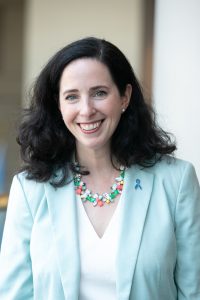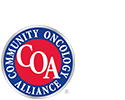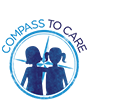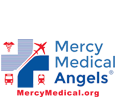Growing Up with Huntington’s Disease
Next month marks Huntington’s Disease (HD) Awareness Month and Real World Health Care is dedicating this column to an important part of the Huntington’s patient community: children, teens and young adults.

Louise Vetter, CEO, Huntington’s Disease Society of America
“Whether youth have a parent with Huntington’s or if they themselves have the early-onset form of the disease called Juvenile Huntington’s Disease, they feel the impact of this rare movement disorder,” said Louise Vetter, CEO, Huntington’s Disease Society of America.
What is Juvenile Huntington’s Disease?1
An estimated 41,000 people in the U.S. have HD. Juvenile HD is a less common, early-onset form of the disease that begins in childhood or adolescence. About 10 percent of people with HD are under 20, the age at which Juvenile HD is defined in terms of symptom onset.
Signs and symptoms of Juvenile HD include loss of thinking abilities, personality changes, impaired coordination and emotional problems. Children and teens with Juvenile HD often have a rapid decline in school performance as their ability to think and reason is weakened. Other common symptoms include dystonia, tremors, muscle twitching, stiffness of the leg muscles, clumsiness, slurred speech and swallowing problems. Experiencing these symptoms can lead to feelings of anger, frustration, sadness and fear, and may also lead to aggressive behavior. Unlike in people with adult-onset HD, seizures are common.
Juvenile HD progresses rapidly once symptoms appear, and most people with Juvenile HD do not survive more than 10 to 15 years. The earlier symptoms onset, the faster the disease progresses. There is no cure for Juvenile HD, and there is no way to slow or stop the progression of the disease. Treatment is primarily supportive and focused on increasing quality of life.
“Juvenile HD is like a concentrated form of the disease in terms of its evolution,” Vetter said. “Whereas HD symptoms in adults may progress over 20 years, Juvenile HD progresses within a couple of years, making it more of a crisis situation.”
Supporting Youth Impacted by Huntington’s Disease
To support youth impacted by HD, the Huntington’s Disease Society of America created the HDSA National Youth Alliance (NYA). NYA started in 2004 as a small group of kids who met at the HDSA Annual Convention and wanted to build a support network of peers who understand what it’s like to have HD in the family. Today, NYA boasts more than 500 young men and women ages 9-29.
“The NYA is dedicated to being the last generation with HD,” Vetter said. “It not only supports young people within the HD community, but also inspires the youth of HDSA to get involved in the battle against HD and be proactive in the fight.”
HDSA is a classic grassroots organization with 50 chapters. Members organize local events, participate in national HDSA events, support HD advocacy and fundraising efforts, and share their experiences and observations with others in both formal and informal ways. The NYA is a unique program provided by HDSA with regional leads and mentors working with chapters to support them and youth affected by HD connect to local social workers and other resources. An e-newsletter keeps members up to date with research, volunteer initiatives and how others affected by HD are managing.
Vetter said that NYA members also are active on social media and use technology to connect one-on-one. She pointed out the NYA’s Facebook and Twitter channels and noted that because suicide can be an issue within this community, NYA members and HDSA staff closely monitor social media to listen for any early cues.
NYA Retreats and Conventions
The NYA plans regular retreats around the country to give kids impacted by HD a weekend of sharing and learning about the disease, with opportunities to ask questions in a safe environment with trained professionals.
“The retreats are free to attend and are often the first time a young person is able to meet a peer going through the same things they are,” Vetter said.
The NYA also celebrates NYA Day at the HDSA National Convention each summer. Usually held the Thursday before the convention starts, the day is dedicated to education and support for members who discuss topics such as advocacy, fundraising, research and awareness for HD. This year’s convention is scheduled as a virtual event for June 4-7.
The Isolation of Juvenile HD
While only a fraction of NYA’s members have Juvenile HD—most have a family member with the disease—the NYA offers those with the young-onset form of HD an important group of peers who understand and don’t judge.
“Because Juvenile HD is so rare, it can be tremendously isolating, especially if the child or young adult is unable to attend school or participate in regular activities,” Vetter said. “There are a lot of social factors at play, and family members need more support. They need to learn how to work with their school system and how to integrate their child in activities and community-based programs.”
Families of children with Juvenile HD are encouraged to meet with school representatives to develop an Individual Education Plan, which should be reviewed frequently as the disease progresses. Parents should expect to come into contact with many people who have no experience with the disease. They may have to inform doctors, teachers and other individuals that although Juvenile HD is rare, many of the daily challenges are similar to those of children who have other disorders or disabilities.
“HD is truly a family disease, affecting parents, siblings and the extended family,” Vetter concluded. “Professional counseling is important for any family member who feels overwhelmed, depressed or out of control.”
Additional Resources:
1-National Institutes of Health

















